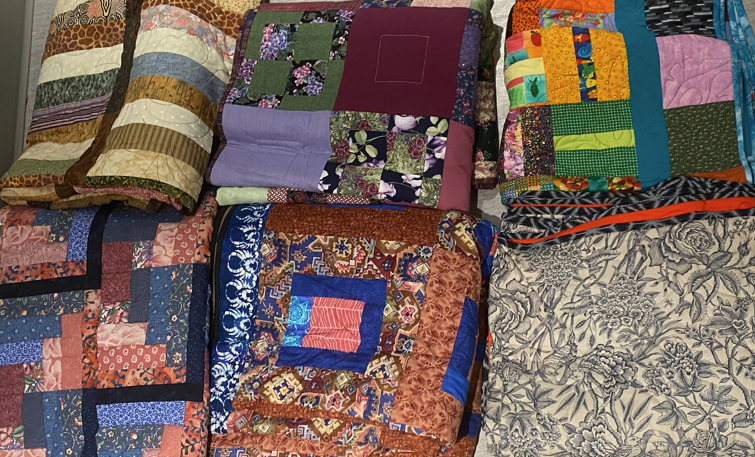
home / news / from shelter to housing
News
From Shelter to Housing
Date 12 Jul, 2024

Move out days—when shelter residents move out of their shelter pod and into a permanent housing unit—are special ones. Last year, we helped place 18 residents into long-term housing. On move out days, Stephanie Kallstrom, Case Planner, along with a shelter resource worker, help the resident pack up their belongings and drive them to their new home. They then present them with a housewarming package that includes toiletries, socks, pillows, and a special gift.
“We present quilts [made by members of St. John’s United Church] to clients in their new unit and they love it,” Stephanie shared.

As Case Planner, Stephanie helps find long-term housing for shelter residents and assists with the application and transition process.
While we work to house as many people as soon as possible, there are only a few units available in the area every month, and even then, the competition is tight. Monthly meetings with BC Housing allow us to collaborate on priority residents. Sometimes it’s just the luck of the draw when we have a person who is perfect for an available unit. Buildings have mandates, for example, some may require 50% of residents to be Indigenous and 10% gender-diverse people.
“We have 51 people in our shelter, maybe only seven on the priority list,” Stephanie said. High priority residents are extra vulnerable people, including those fleeing from abuse, people who’ve had multiple evictions and are hard to house, gender-diverse and trans folks, and those who have been at the shelter for over a year. Her process includes looking at the list of priority residents to see who would be best suited for the available units.
“It can be tough because not all buildings are appropriate for some of our residents.” For example, a building without elevators would not be suitable for a resident in a wheelchair.
When Stephanie sees a unit that would work well for a resident, she helps them fill out the required paperwork, including a Supportive Housing Registry (SHR) application and an assessment form.
If the housing provider decides that an applicant is a good fit, Stephanie will then coach the resident in preparation for the interview process. While interviews aren’t always necessary for supportive housing, they’re often a step when applying for high-barrier buildings such as self-contained units that have their own kitchen and bathroom.
“Housing retention is high for us because we make sure that when we put residents up for housing, it’s the right fit for them,” Stephanie explained. “We want to avoid placing someone in a situation where they might get evicted because the experience of becoming homeless again can be very traumatizing.”
Thankfully, this year has been a good one for housing residents. New units are freshly available, and we’re optimistic about more folks finding long-term housing.
We look forward to more move out days where we can present residents with a housewarming package that includes that special gift that everyone loves: a handmade quilt.